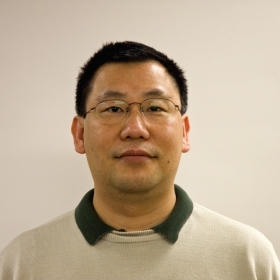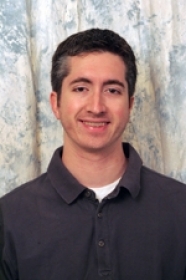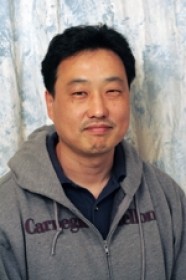Learning Methods for Thought Recognition
Event Location: NSH 3305Abstract: This thesis proposal considers the problem of training machine learning classifiers in domains where data are very high dimensional and training examples are extremely limited or impossible to collect for all classes of interest. As a case study, we focus on the application of thought recognition, where the objective is to [...]
Sketching Reality: Converting 2D sketches to 3D realistic models
Event Location: NSH 1305Bio: Sing Bing Kang received his Ph.D. in robotics from CMU in 1994. He is Principal Researcher at Microsoft Corporation and adjunct faculty member of the School of Interactive Computing at Georgia Tech. His interests are image-based modeling as well as image and video enhancement. Sing Bing has co-edited two books in [...]
Improving Teleoperation of Mobile Robots and Manipulators in Large Workspaces via Haptic Feedback
Event Location: GHC 6501Abstract: Many applications today involving mobile robots require human control because the task to solve or the environment to move in is too complicated for existing fully autonomous systems. While computers today are already better than humans at controlling machines at a low level and can provide operators with a higher level [...]
Control of Full-Body Humanoid Push Recovery Using Simple Models
Event Location: GHC 8115Abstract: Humanoid robots represent the state of the art in complex robot systems, but the design of controllers can be challenging and tedious. High performance controllers that can handle unknown perturbations will be required if complex robots are to one day interact safely with people in everyday environments. The high degree of [...]
Ambulatory Manipulation
Event Location: GHC 6115Abstract: Robots with legs have a number of advantages over those with wheels, such as greater ability to navigate through rough terrain, more flexible manipulation of objects, and fully holonomic control of the body. However, leveraging these advantages on a multi-legged system is computationally intensive and often relegates leg usage exclusively to [...]
Unsupervised Detection of Regions of Interest Using Iterative Link Analysis
Event Location: NSH 1109Bio: Gunhee Kim is a Ph.D. student in the Computer Science Department advised by Takeo Kanade at CMU. He received his master's degree under the supervision of Martial Hebert in 2008 from CMU's Robotics Institute. His research interests are computer vision, machine learning, data mining, and biomedical imaging. Abstract: This is a [...]
Mapping Large Urban Environments with GPS-Aided SLAM
Event Location: GHC 6115Abstract: Simultaneous Localization and Mapping (SLAM) has been an active area of research for several decades, and has become a foundation of indoor mobile robotics. However, although the scale and quality of results have improved markedly in that time period, no current technique can effectively handle city-sized urban areas. The Global Positioning [...]
Webcam Clip Art: Appearance and Illuminant Transfer from Time-lapse Sequences
Event Location: NSH 1305Bio: Jean-Francois Lalonde received his B.E. in Computer Engineering with honors from Laval University, Canada, in 2004. He then went to Carnegie Mellon University to pursue his M.S. in Robotics under Martial Hebert, which he received in 2006. Since then, he has been pursuing a Ph. D. in Robotics under Alexei A. [...]
A Self-Supervised Machine Learning Framework for Augmenting Cartographic Resources
Event Location: NSH 1109Abstract: Maps are important for both human and robot navigation. Given a route, driving assistance systems brief maps to guide human drivers to their destinations. Similarly, topological maps of road network provide a robotic vehicle with information about where it can drive and what driving behaviors it should use. Maps simplify both [...]








